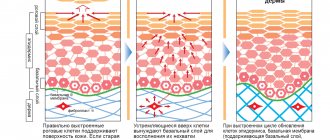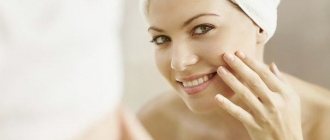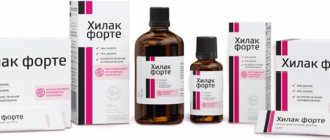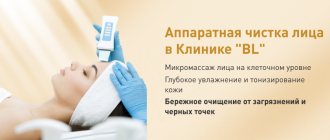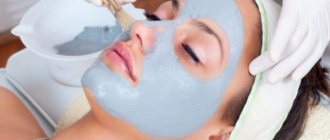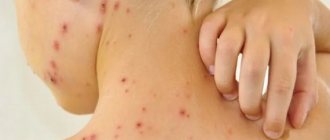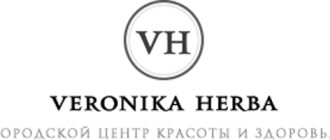Peeling stimulates the renewal of the epidermis, eliminates minor surface defects, gives the face radiance and visibly rejuvenates it. Let's look at how chemical peels work, who is recommended for such procedures, and what results you should expect.
The name of the procedure comes from the English verb “to peel” - to exfoliate, cleanse, remove the crust. The cosmetic name of the procedure is exfoliation (exfoliation, cleansing). With the help of peeling, the top layer of the epidermis is removed - dead cells that spoil the complexion, give the skin an unhealthy appearance and make it difficult to breathe.
This can be done in different ways: mechanically (using a scrub), using a laser or special compositions that stimulate cell exfoliation. The last option is called chemical peeling.
What it is?
Healthy skin is constantly renewed, and the upper - horny - layer of the epidermis consists of dead cells. They gradually peel off, giving way to new ones. If this process slows down, the layer of dead cells becomes too thick. As a result, the breathing of the skin is disrupted, its surface becomes uneven, the complexion deteriorates, and other defects appear.
They contain acids that dissolve dead cells and stimulate the process of exfoliation of the upper layer of the epidermis. More concentrated formulations affect both the middle and deep layers of the skin.
At its core, the procedure is a controlled damage (chemical burn) to the skin. The body reacts to such exposure with intensive restoration and cell renewal: damaged layers are replaced with new ones. As a result, the face looks much younger and fresher.
The history of chemical peelings began in ancient times, when beauties used wine, fruit juices and fermented milk products to prolong their youth. The development of chemistry in the late 19th and early 20th centuries gave women effective but unsafe peelings using concentrated acids and toxic substances. They were popular with the most desperate ladies who wanted to preserve their beauty for many years at any cost. Only later, at the end of the 20th century, when scientists studied the properties of alpha hydroxy acids (AHA), modern superficial and medium peels appeared - delicate but effective. Such procedures quickly gained popularity, and now cosmetology clinics offer a wide variety of options to suit every taste.
❄
Retinoic peels belonging to the superficial category have gained particular popularity recently. Retinoic peels are also known as “yellow peels” or “weekend peels” (due to the short recovery period). The mechanism of action of retinoic peels is fundamentally different from the mechanism of action of other peeling agents. The retinoids included in the “yellow peeling” do not damage the skin, do not destroy living cells, and do not coagulate proteins. They interact with specific nuclear receptors of cells. Principles of action and types of chemical peels remove dead skin layers by stimulating the regeneration of young cells.
These receptors have been found in basal keratinocytes, melanocytes and fibroblasts. Thus, as a result of the effect of retinoic peels on the epidermis, the level of mitotic activity of basal keratinocytes increases, the processes of differentiation and keratinization, as well as melanogenesis are normalized, the synthesis of epidermal lipids and components of the intercellular matrix of the dermis is activated and stimulated, and the number of atypical cells is reduced. As a result, skin aging slows down, its texture improves, its relief is evened out, and a pronounced rejuvenating and brightening effect is achieved. In addition, yellow peel retinoids have a powerful antioxidant effect. Histological studies have shown that the stimulating effect of retinoic peels on the cellular structures of the skin persists for 4 months after the last application of retinoids. Other important reasons for the demand for retinoic peels are their atraumatic nature and high safety of use, a short post-peeling period and an extremely low rate of complications. Therefore, retinoic peeling can be carried out in the summer.
Varieties
Depending on which layers are affected by chemical compounds, there are three types of peelings:
- Surface. The most gentle procedure that can be carried out even at home (in this case, the most gentle preparations with a minimum content of active ingredients are used). The area of influence is limited to the epidermis (stratum corneum), living cells are not affected. The acid concentration is low (up to 20%), the treatment process is painless, and recovery does not take much time. The effect accumulates, so superficial peelings are carried out in courses that consist of 5-10 sessions. By the end of the course the effect reaches its maximum. The procedure evens out and improves complexion, giving the skin velvety, fresh, smooth and tender. Superficial peelings are often used as part of complex procedures, as they improve the penetration of beneficial substances from masks, serums, and creams into the dermis;
- Median. In this case, more concentrated (30-40%) drugs are used, which act not only on the epidermis, but also on the dermis (papillary layer). Intense exposure allows you to achieve a noticeable rejuvenation effect, eliminate post-acne and wrinkles. However, this option is more damaging to the skin than the previous one. For this reason, it is not recommended for everyone; moreover, medium peeling can only be entrusted to a professional cosmetologist in the clinic. An example of a medium peel is the TSA peel with trichloroacetic acid. Such peels are now used extremely rarely due to the large number of side effects;
- Deep. The impact extends to all layers of the skin, including the basal layer. To treat the skin, phenol is used, a toxic substance, which is supplemented with compounds that prevent the rapid absorption of the drug. This is a very aggressive and traumatic procedure related to surgical manipulations; it is necessarily carried out using anesthesia and only in a hospital. Deep effects can significantly rejuvenate the face and get rid of such serious defects as scars, but it is recommended to do it only in adulthood (over 60 years old) and no more than once in a lifetime. The recovery period after such manipulation can take six months.
The higher the concentration of acids, the stronger the burn, the more the skin is injured, and the more actively it is restored.
Peels for home use should not be overestimated: the acid content in them is minimal, and the effect cannot be compared with the results of procedures performed in the clinic. When creating cosmetics, manufacturers rely on safety, so that even if used incorrectly, you cannot harm yourself.
Professional products are a completely different matter. They are designed for specialists who strictly follow protocols and strictly follow all recommendations. That is why even a course of superficial peelings in the clinic provides a noticeable rejuvenation effect (detailed study of the usefulness of chemical peels).
The effectiveness of peelings depends on the concentration of active substances, pH (the higher it is, the less damage to the skin), application technique and number of layers, exposure time and the previous preparation procedure.
Peeling in summer
✹❀
There is still an opinion that chemical peelings are impossible during periods of high solar activity. Indeed, in some cases it is undesirable to perform peeling in the summer. However, if you choose the right chemical agents and home care products. Then, by performing summer peeling, cosmetologists can successfully solve a number of aesthetic problems in the summer.
Criteria for choosing the type of chemical peeling:
- indications and planned depth of skin damage;
- mechanism of action of the peeling composition;
- contraindications for peeling;
- the patient’s lifestyle (bad habits, social status);
- presence of concomitant diseases;
- the patient's real wishes;
- patient requirements for the terms and conditions of the post-peeling period.
Indications
Superficial peelings allow you to solve the following problems:
- Improving the quality of the skin;
- Leveling the surface of the epidermis;
- Elimination of pigmentation;
- Improved complexion;
- Narrowing of pores;
- Improving turgor, elasticity;
- Reducing the manifestations of post-acne;
- Preparation for cosmetic and surgical interventions.
Medium varieties have a more intense effect and can also combat:
- Wrinkles;
- Pronounced pigmentation;
- Post-acne;
- Flabbiness;
- Stretch marks;
- Scars;
- Hyperkeratosis.
Deep peels are indicated for patients over 60 years of age with pronounced age-related changes, scars, cicatrices and pigmentation.
In most cases, it is recommended to start with a course of superficial peeling, which is useful not only in itself, but also as a preparation for more intense effects.
Peeling is a universal procedure that is suitable for patients of all ages. If in adulthood it is recommended for renewal and rejuvenation of the skin, then for young girls peelings help cope with post-acne, enlarged pores and other defects. Regular exfoliation of the surface layer of the epidermis is also useful for acne, but in this case it is recommended to combine peeling with other procedures, for example, ultrasonic cleansing and mesotherapy.
Contraindications
- Inflammation, rashes (including allergic ones), violations of the integrity of the skin in the treatment area;
- Any acute (exacerbated chronic) diseases, febrile conditions;
- Exacerbation of herpes;
- Hypertension;
- Oncological diseases;
- Aggressive influences on the treated area less than two months before peeling;
- Taking certain medications, incl. increasing photosensitivity;
- Pregnancy and lactation;
- Psoriasis, rosacea, telangiectasia (only the most delicate peels are indicated);
- Large birthmarks in the treatment area;
- Fresh tan;
- Individual intolerance to components.
The list of contraindications may vary depending on the type and concentration of the active substance.
The procedure for rosacea is prescribed with caution. It is not recommended to carry out the course in spring and summer for those who spend a lot of time in the sun.
What problems does peeling solve?
As a rule, exfoliation is recommended for aged (after 35 years) and problem skin. The main indications for prescribing peelings include:
- dry, dull, aging skin
- long-term inflammatory skin diseases, such as acne and acne, which are characterized by the formation of pustules (pustules), comedones (blackheads) and, as a result, scars
— wrinkles (age-related, expression lines)
— premature age-related changes in the skin due to exposure to ultraviolet rays (photoaging)
– pigmentation (dark spots and freckles)
- scars, cicatrices, loss of clarity of the oval of the face
How is peeling performed?
Acid peeling is a seasonal procedure that is recommended during the cold season. This is due not so much to the air temperature, but to the fact that in autumn and winter the sun is much less active than in summer, which means the risk of pigmentation is reduced.
The procedure consists of several stages:
- Cleansing. The doctor removes remaining cosmetics and impurities using neutral products. After this, the surface of the epidermis is thoroughly dried;
- Application of the drug. Peels can be in the form of aqueous solutions, gels, thick creams. The denser the consistency, the more delicate the effect. In any case, the product is applied first to denser, and only then to more delicate areas of the skin;
- Removing a tool. Depending on the type of peeling, the drug remains on the face from 1 to 15 minutes. After this, you can proceed to the next stage. There are also peelings, for example yellow peeling, with which the patient goes home and washes off on his own after a few hours;
- Neutralization. A preparation is applied to the treated areas, which tones, refreshes and soothes the epidermis, moisturizes it and neutralizes the effects of acids. The neutralizer should also be left on the face for a few minutes and then washed off with water. If you skip this step, burns may occur;
- Hydration. After removing the neutralizer, a moisturizing cream, gel, serum or mask with a soothing effect is applied to the face. At this time, the skin is especially receptive, so the effect of cosmetics is extremely effective.
Before leaving the clinic, you must protect your epidermis with SPF cream.
Technique
A good chemical peel for the face in a cosmetic clinic is carried out in four stages:
- Cleaning and disinfection. The skin is treated with a special milk or gel containing a weak solution of glycolic acid with surface active components. This allows you to reliably degrease the areas to be treated and eliminate contamination. The use of soap is not allowed, as this leads to severe alkalization of the skin and reduces the effectiveness of peeling.
- Application of the active agent. Using a fan brush, a cosmetologist evenly treats the skin of the face in a certain sequence: forehead, temples, chin, neck, center. The preparation for chemical peeling of the face is not applied to the moving part of the eyelids. During the procedure, the cosmetologist constantly monitors the patient’s condition and maintains precise timing. A slight burning sensation is considered normal, but should not become unbearable. After diffuse erythema appears on the skin, proceed to the next stage of the procedure.
- Neutralization of acid. Deactivation of the peeling agent is carried out using a special neutralizer. It completely stops the drug from working. Residues of the base substance and neutralizer should be washed off with cool water. Chemical glycolic facial peeling does not require the use of deactivators. The product is removed from the skin surface by simple washing.
- Post-peeling care. After deactivating the acid, the cosmetologist treats the patient’s face with a special post-peeling cream. This is necessary, since during the procedure the epidermis is severely dehydrated and needs to compensate for fluid loss.
In the future, it is necessary to use sunscreens, moisturizers, and wash your face twice a day with a warm chamomile decoction without detergents. If your skin feels dry and tight, it is recommended to spray your face with a thermal spray. After medium chemical peels of the face, crusts form on the face and crack. It is forbidden to tear them down by force. Hydrocortisone ointment is applied to the damaged areas. Peeling and separation of crusts stops by 5–7 days after the procedure.
Peeling results
Facial skin peeling allows you to achieve the following positive changes:
- the color and texture of the skin becomes smoother;
- fine wrinkles disappear;
- deep wrinkles become less noticeable;
- a prolonged effect of skin moisturizing is achieved;
- the tone of the outer integument of the body increases;
- zones of hyperpigmentation are eliminated or become almost invisible;
- local immune reactions are enhanced.
Consequences if the procedure is carried out incorrectly
These changes are achieved after complete restoration of the skin. Until this point, a person may experience certain negative consequences, which soon go away on their own. These include:
- For superficial peeling – persistent erythema, dyschromia, infection, contact and allergic dermatitis. Similar reactions are accompanied by chemical glycolic facial peeling.
- For medium peeling – the appearance of a peeling crust and burn exudate.
- For deep chemical peeling of the face – the appearance of erythema, pastiness, local inflammatory reaction, swelling.
It must be remembered that all of these conditions fall into the category of expected and completely controllable. They do not pose a threat to life, health or appearance, and if all recommended recovery measures are followed, they pass without delayed consequences.
What compounds are used
Preparations for peeling are selected individually depending on the characteristics of the skin and its condition. The higher the acid concentration, the more effective the effect, and the less suitable this option is for delicate, sensitive skin. Different types of acids also differ greatly from each other. Depending on the size of the molecules and the depth of penetration, they can act more or less delicately, which means they are suitable for different skin types.
The most popular types of chemical peels:
- Almond. This is a superficial peeling based on mandelic acid, which has an exfoliating, moisturizing, and antiseptic effect. Due to its large size, the mandelic acid molecule penetrates shallowly into the skin and acts very gently. Almond peels do not increase photosensitivity and can be used all year round. Finally, it is an optimal choice for problematic, impure skin, as mandelic acid prevents the formation of comedones and clears out crusts. The course consists of 6-10 procedures;
- Pyruvic (summer). Another gentle option for year-round use. This superficial peeling uses pyruvic and lactic acids, which stimulate cell regeneration, moisturize the epidermis and tighten pores. The procedure is suitable for dry and sensitive skin;
- Yellow. Retinoic acid, which can be used for both superficial and mid-level peels, has a rich yellow tint, which gives the procedure its name. It must be borne in mind that after such exposure the epidermis also acquires a yellowish tint for some time. The acid penetrates deeply into the dermis and triggers regeneration processes. This is a good choice at the first signs of aging, since the procedure has a pronounced rejuvenating effect, and also tightens the skin, gives it elasticity, and regulates the functioning of the sebaceous glands. Like other medium peels, it requires special preparation;
- Biophytopilling. This is a superficial peeling based on hydroxyl acids, supplemented with plant extracts and vitamins. The procedure instantly improves the condition of the skin and complexion, gives the epidermis elasticity and smoothness. Biophytopilling is carried out in courses and is suitable for any skin except very dry skin;
- Melaspil. The drug contains salicylic and hydroxypropionic acids, as well as resorcinol and depigmenting agents. Medium peeling is optimal for combating hyperpigmentation; it perfectly whitens, rejuvenates the skin and improves its condition. Not suitable for dark skinned people;
- PRX-T33. This product is specially designed for sensitive and dry skin. After the procedure, there is no peeling of the skin, but the dermis is intensively renewed under the influence of trichloroacetic acid TCA, kojic acid and peroxide;
- Trichloroacetic. This option is famous for the fact that it effectively tightens enlarged pores, improves complexion, and eliminates signs of photo- and chronoaging;
- Jessner peeling. Mid-surface version based on salicylic and lactic acids with resorcinol. Recommended for oily or aging skin. Depending on the number of layers applied to the face, it is used as a surface or middle layer;
- Salipil (anti-acne). A drug based on salicylic acid is used, has a pronounced anti-inflammatory effect and helps fight rashes. Also suitable for mature skin;
- Depigmenting. As the name suggests, this variety is designed to combat hyperpigmentation. For such peels, various acids can be used alone or in different combinations. Whitens and rejuvenates, gives freshness and matteness;
- Fruit. In this case, fruit acids are used. Depending on the concentration, they have a gentle or more intense effect on the epidermis. Suitable for any age, especially effective at the first signs of aging. A good choice for problematic, rash-prone skin;
- Glycolic. The acid contained in green grapes and sugar cane is used. Due to its low molecular weight, it penetrates well into the skin and has an effective effect. Suitable for refreshing all skin types, smoothes out fine wrinkles, tightens pores and eliminates pigmentation well;
- Lactic. In this case, the acid contained in fermented milk products, as well as blueberries, tomato juice, grapes, and apples is used. It has a pronounced exfoliating and moisturizing effect.
The cosmetologist selects the appropriate option depending on the condition of the epidermis and existing defects.
Types of Chemical Peels
The effect of chemical peeling depends on the depth of skin damage. With increasing depth, the effectiveness of the procedure increases, but at the same time the frequency of possible complications, the duration and complexity of the rehabilitation period increases.
The choice of chemical peel depends on:
- skin condition;
- features of healing of the wound surface;
- areas of expected impact;
- the type of chemical agent included in its composition, its concentration and pH;
- forms of applied peeling composition (gel, lotion, cream, etc.);
- technique and number of applications;
- quality of patient skin preparation.
Based on an assessment of the nature and extent of age-related and pathological changes, taking into account skin type. Classification of signs of photoaging and other objective data. The specialist selects the optimal peeling composition and the depth of its effect, stimulating the regeneration of young cells.
Rehabilitation
After chemical peels, you need to take good care of your skin to give it a chance to recover. First of all, hydration is necessary. It is recommended to use products with hyaluronic acid, panthenol, aloe and vitamins. In addition, you should avoid any aggressive procedures, the use of alcohol-containing cosmetics, retinoids, and mechanical scrubs. When crusts appear, you cannot remove them yourself - you should be patient and wait until they fall off spontaneously.
It is extremely important to protect your face from ultraviolet radiation. The renewed epidermis is especially sensitive to such effects, so the risk of age spots increases. So the use of protective lotions with a high SPF factor is mandatory not only in the summer (when peeling is generally not recommended), but also in the winter.
To maintain the effect, your doctor may recommend using special cosmetics containing acids. They can be included in creams for everyday use in low concentrations sufficient to preserve the results for a long time.
After superficial treatment, the skin is restored quickly, however, during the entire course and two weeks after its completion, careful care and avoidance of any aggressive influence are necessary.
Disadvantages of this procedure
Since exposure to acids on the skin is an aggressive process, this technique has disadvantages:
- a large list of contraindications;
- painful sensations due to chemical burns of the skin;
- long rehabilitation period - for superficial and medium penetration of acids is 10 - 14 days, for deep penetration - up to 2 months;
- possible appearance of hyper- or hypopigmentation - dark or light areas on the skin;
- Usually one procedure is not enough - treatment and rejuvenation must be carried out over a course;
- acids can cause allergies, even if there were no complaints of a reaction before the procedure.
After the session, you should not sunbathe for a long time under the sun or in a solarium, since ultraviolet radiation can cause complications. Therefore, acid exfoliation is not recommended in the summer; it is better in the cold season.
Effect
After a course of procedures, the face becomes fresh and youthful. Peels are very popular precisely because the results are clearly visible. It can be appreciated not only by attentive observers - even casual acquaintances will notice a clear improvement in the condition of the skin.
Compliments are guaranteed after the first sessions, and by the end of the course:
- Improves and evens out complexion;
- Wrinkles are smoothed out and disappear;
- Elasticity and turgor increase;
- Pigmentation disappears;
- The skin becomes smooth and soft;
- Acne goes away;
- Scars are smoothed out, incl. from post-acne;
- Pores tighten;
- The functioning of the sebaceous glands is normalized.
Peeling courses combine well with other cosmetic procedures - both hardware and injection. A cosmetologist will tell you how best to combine different types of treatment to achieve optimal results.
Advantages of this procedure
Acid peeling has many advantages:
- effective at any age, provided the correct composition is selected;
- stimulates cell renewal, promotes rejuvenation;
- activates tissue regeneration;
- helps reduce the depth of scars and cicatrices;
- effective in the treatment of acne, acne, comedones;
- restores the structure and oval of the face;
- removes hyperpigmentation, freckles, age spots;
- normalizes a healthy complexion;
- promotes collagen production, thereby increasing skin elasticity and firmness;
- inhibits fading processes;
- reduces the depth of wrinkles, fights sagging;
- reduces pores, normalizes sebum production;
- controls water balance;
- provides full access of oxygen and nutrients to cells;
- stimulates blood circulation and microcirculation;
- restores velvety and smoothness of the skin.
Chemical exfoliation is one of the effective ways to rejuvenate and heal the skin. The technique provides the fastest possible results; it is an excellent alternative to surgical interventions and plastic surgery.
Indications and contraindications for acid peeling
Acid peeling is a universal procedure; it can be used for the face and whole body. It helps eliminate stretch marks, make the skin more elastic and improve its tone after childbirth or sudden changes in body weight. The permitted age for acid peeling is 18 years and older. This procedure is considered especially effective for caring for problematic acne-prone skin. Acid peeling often precedes biorevitalization and mesotherapy.
Reasons for acid peeling for the face:
- presence of facial wrinkles;
- loss of elasticity and skin aging processes;
- enlarged pores;
- presence of pigmentation;
- dry and dehydrated skin;
- comedones;
- the skin is lumpy and dry.
Acid peeling makes the face fresher. The skin takes on a rested appearance, its tone is restored, scars and scars are evened out. With regular use of such peeling, the secretion of the sebaceous glands is significantly reduced, and the formation of comedones stops. In dry skin, after manipulation, the water balance and pH level are normalized.
Contraindications:
- damage to the skin (wounds, scratches, cuts);
- the skin is prone to allergic reactions that cause swelling and rashes;
- infectious diseases (rosacea, psoriasis, ARVI, herpes and others);
- previously unsuccessful cleaning with ultraviolet or laser;
- oncology;
- inflammation occurring in acute form;
- pregnancy and breastfeeding.
A specialist will help you choose the safest and most gentle product for any skin, even if it is super problematic. However, for each specific case, an individual peeling agent and tactics are selected.
Question to the expert
Natalya Anatolyevna, you have been a recognized expert for many years in the field of chemical peels. How has the concept of chemical peels changed recently and what place do they occupy in modern aesthetic medicine at the moment?
Peeling without destroying the basement membrane (can be of different composition - chemical, enzymatic, retinoic; can be presented in different forms - lotion, gel, cream, mask, etc.) allows you to quickly and without consequences bring the skin into a presentable appearance, very gently and safely stimulate its renewal, is a relatively inexpensive procedure of choice for the vast majority of patients and should occupy a strong position in aesthetic medicine. More traumatic types of peeling are also effective, but should be used less frequently and with more strictly verified indications. Over the past few years, I have only strengthened in this position, but the general situation demonstrates that nowadays, even during the initial visit to a cosmetologist, even patients who have no previous experience of non-traumatic care procedures are increasingly offered injection and hardware methods of influence. And patients, motivated by the media and the fear of not being like everyone else, of being irrevocably late in the fight against aging, sincerely believe in the correctness of this approach. At the same time, a paradoxical picture is often observed - many invasive expensive procedures have been performed, but the condition of the skin itself leaves much to be desired. And I just want to do a light, very superficial peel or mask and wipe the skin with lotion.
Types of cosmetic acids
Acid peeling is used to improve the appearance and condition of the skin, as well as improve skin tone. Cosmetic acids can be used for both dry and oily skin. When used correctly, the acid deeply moisturizes the skin, removes dead and damaged epidermal cells, stimulates cells in the deeper layers of the skin to restore the epidermis, making it smoother and the signs of aging less noticeable.
During acid treatment, the most commonly used acids are lactic, mandelic, citric and glycolic acids.
Acid peeling - before and after
Types of acids used in cosmetology:
- Alpha hydroxy acids (AHAs).
They have a moisturizing effect and stimulate the metabolism of skin cells. Treatments with fruit acids are recommended for dry, pale skin with acne. The group of alpha hydroxy acids includes: lactic, glycolic, citric, malic, tartaric and mandelic acids. - Beta hydroxy acids (BHA).
They have moisturizing, exfoliating, anti-inflammatory, whitening and antioxidant properties. They are recommended for pale skin with acne and signs of aging. At higher concentrations, these acids are irritating and may cause sensitization. The most commonly used BHA is Salicylic Acid. - Polyhydroxy acids (PHAs).
They have a moisturizing, anti-inflammatory and antioxidant effect. They are gentler than alpha hydroxy acids and non-irritating, making them suitable for tired, sensitive skin with discoloration and signs of aging. Examples of polyhydroxy acids are gluconolactone and lactobionic acid.
✹❀❄
Jessner peeling is a classic combined mid-superficial peeling, the activity of which is determined by the ingredients it contains. Lactic and salicylic acids, as well as resorcinol. The effectiveness of Jessner peeling depends on the procedure technique: the more layers of peeling composition are applied. The deeper the penetration will be. This allows the doctor or cosmetologist to individually select the number of layers - from 1 to 8. For each specific patient, thus achieving an optimal result. Peeling causes active large-plate peeling and has a good keratolytic effect. Due to this, it is effective for hyperkeratosis, pronounced age-related changes and skin texture disorders.
